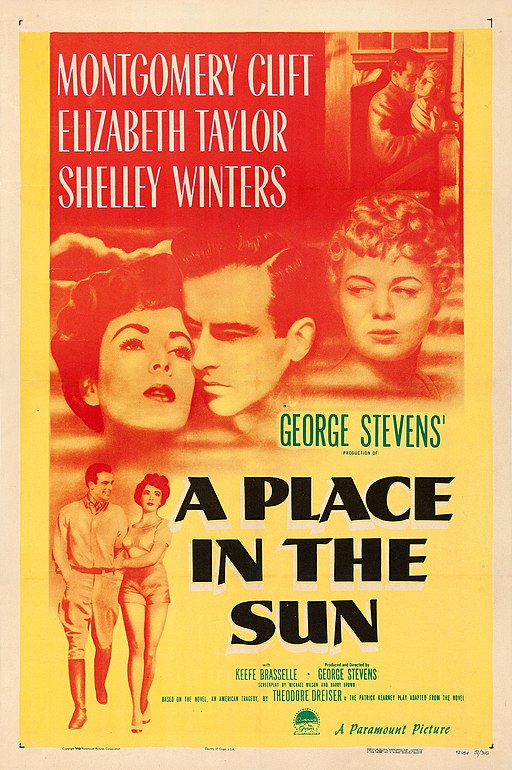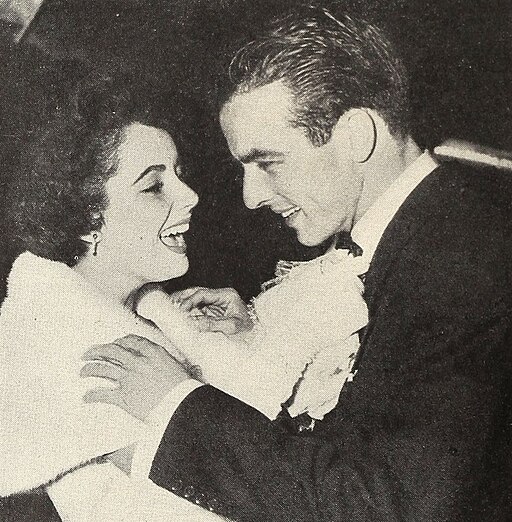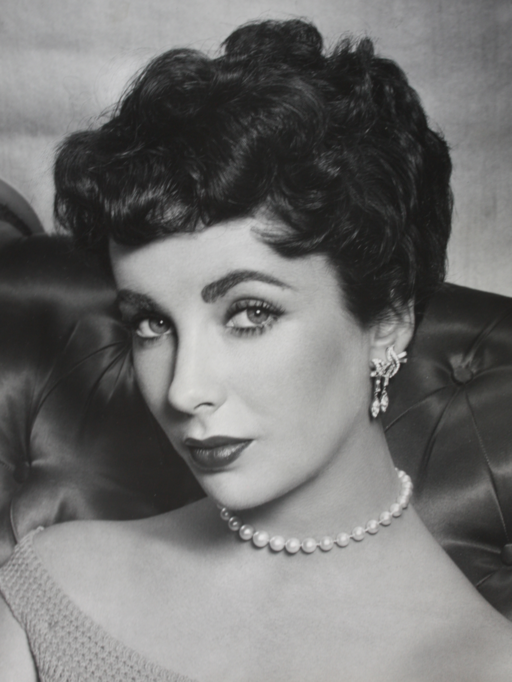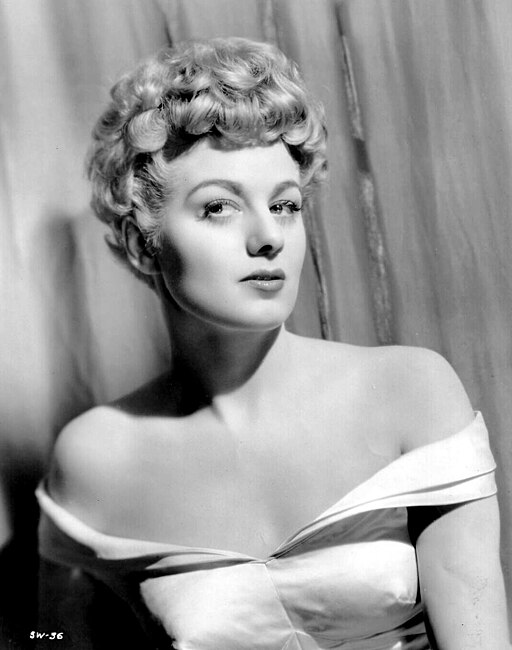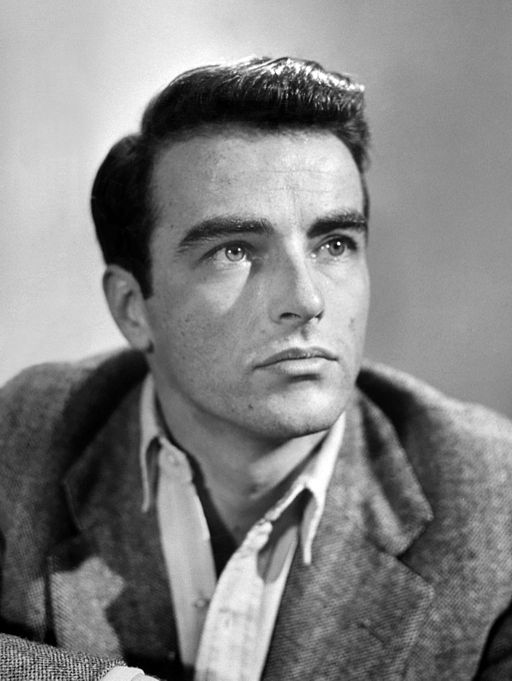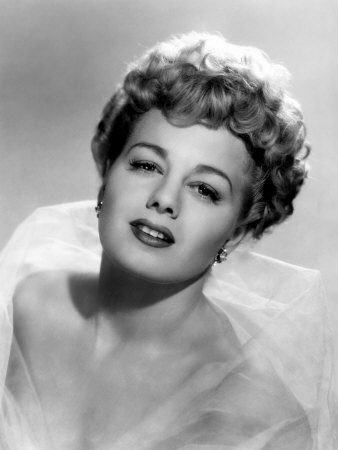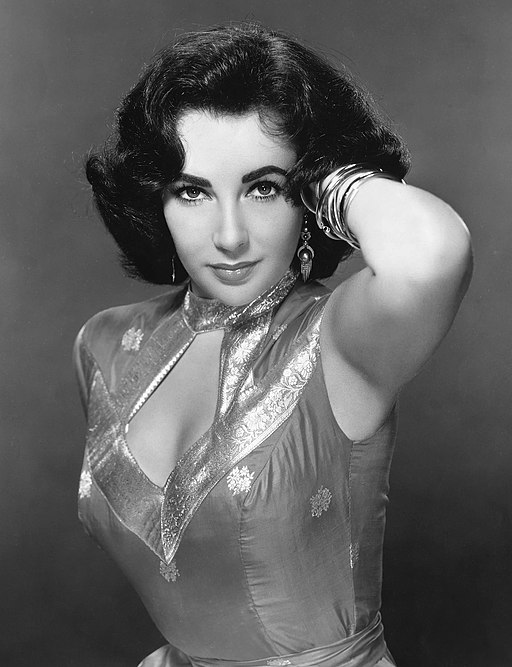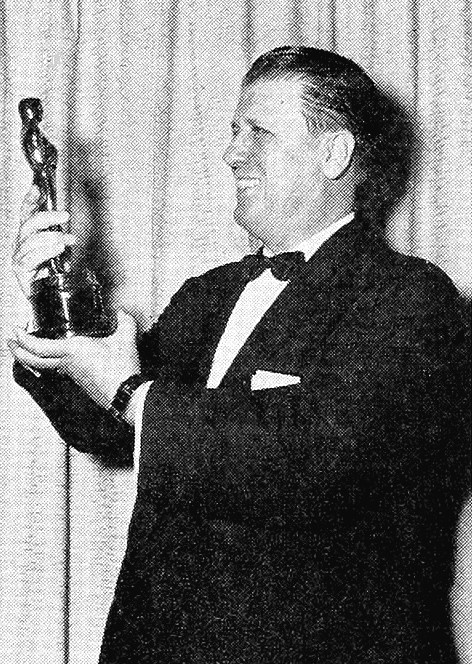A Place in the Sun - 1951
back| Released by | Paramount Pictures |
| Director | George Stevens |
| Producer | George Stevens |
| Script | Michael Wilson, Harry Brown based on the novel |
| Cinematography | William C. Mellor |
| Music by | Franz Waxman |
| Running time | 122 minutes |
| Film budget | $2.3 million |
| Box office sales | $9.75 million |
| Main cast | Montgomery Clift - Elizabeth Taylor - Shelley Winters - Anne Revere |
A Place in the Sun – One of the finest movies of the early fifties
"A Place in the Sun" is a film that beautifully encapsulates the American Dream's dark side. The narrative revolves around George Eastman, a young man who becomes embroiled in a torrid love triangle that ends in tragedy. George Stevens’s direction brings out the internal conflict and the societal pressures faced by the characters, and the cinematography by William C. Mellor beautifully captures the mood and atmosphere of the film.
The film had a substantial impact upon its release and was critically acclaimed, winning six Academy Awards, including Best Director for George Stevens. The combination of a compelling story, powerful performances, and masterful direction resulted in a film that is still celebrated today for its exploration of social class, ambition, and the cost of the American Dream.
Related
Analysis of “A Place in the Sun”:
"A Place in the Sun," directed by George Stevens, is a riveting exploration of the American Dream, social class disparity, and the moral dilemmas that arise when these worlds collide. The film is based on Theodore Dreiser’s novel "An American Tragedy" and Patrick Kearney's play adaptation of the novel.
Plot and Themes
The narrative follows George Eastman (Montgomery Clift), a young man from a humble background, as he navigates the ruthless world of social climbing and aspiration. The film delves into themes of ambition, love, and the moral compromises one makes in the pursuit of success and acceptance. George’s relationship with Alice Tripp (Shelley Winters), a factory worker, represents his working-class origins, while his infatuation with Angela Vickers (Elizabeth Taylor), a socialite, symbolizes his aspirations for a better life.
Direction and Cinematography
George Stevens’ direction is meticulous, with a keen focus on character development and emotional depth. He successfully creates a sense of foreboding and moral ambiguity that permeates the film. William C. Mellor's cinematography complements the direction with its moody lighting and thoughtful composition, effectively capturing the characters’ internal turmoil and the disparity between the different social worlds they inhabit.
Performance
Montgomery Clift delivers a compelling performance as George, masterfully portraying his character’s vulnerability, ambition, and desperation. Elizabeth Taylor shines as Angela, embodying the allure and charm of the upper class, while Shelley Winters provides a heart-wrenching performance as Alice, capturing the tragedy of a woman scorned. The supporting cast also contributes significantly to the film’s depth and emotional resonance.
Music and Sound
Franz Waxman’s musical score enhances the film’s dramatic tension and emotional weight, adding another layer to the storytelling. The music is subtle yet powerful, underlining the characters’ emotional journeys and the film’s thematic exploration.
Social Commentary
"A Place in the Sun" offers a potent commentary on the American society of its time, highlighting the harsh realities of social mobility and the often-unattainable nature of the American Dream. The film does not shy away from addressing the moral complexities of its characters’ actions, providing a nuanced and critical view of the pursuit of success at any cost.
Reception and Legacy
The film was highly acclaimed upon its release, winning six Academy Awards and solidifying its place as a classic of American cinema. It has since been hailed for its profound exploration of societal issues, its stellar performances, and its masterful direction and cinematography.
Conclusion
"A Place in the Sun" stands as a timeless masterpiece, a poignant and thought-provoking film that explores the dark side of ambition and the moral dilemmas that arise in the pursuit of the American Dream. George Stevens’ direction, the powerful performances, and the film’s technical mastery combine to create a cinematic experience that is as impactful today as it was upon its release.
Original Trailer "A Place in the Sun":
Full cast of “A Place in the Sun”:
- Montgomery Clift as George Eastman
- Elizabeth Taylor as Angela Vickers
- Shelley Winters as Alice Tripp
- Anne Revere as Hannah Eastman
- Keefe Brasselle as Earl Eastman
- Fred Clark as Bellows
- Raymond Burr as Frank Marlowe
- Herbert Heyes as Charles Eastman
- Shepperd Strudwick as Anthony Vickers
- Frieda Inescort as Mrs. Vickers
- Ian Wolfe as Dr. Wyeland
- Kathryn Givney as Mrs. Eastman
- John Ridgely as Coroner
- Lois Chartrand as Receptionist
- Paul Frees as Rev. Morrison (voice, uncredited)
- Walter Merrill as Gordon (uncredited)
- Douglas Spencer as Boatman (uncredited)
Analysis of George Steven’s direction:
George Stevens’ direction in "A Place in the Sun" is widely regarded as one of his masterpieces, showcasing his ability to create deep, emotional, and thought-provoking cinema. Below is an analysis of his directorial approach in the film:
Mastery of Visual Storytelling
Stevens' ability to tell a story visually is one of his standout directorial skills in "A Place in the Sun." He uses a combination of meticulous shot composition, lighting, and camera movement to convey the emotional states of the characters and underscore the themes of the film. His use of close-ups, in particular, brings the audience into the intimate world of the characters, creating a connection that is vital for the film’s impact.
Exploration of Themes
Stevens does not shy away from exploring complex and dark themes in the film. He delves into the American Dream, class disparity, love, ambition, and moral ambiguity, creating a rich tapestry that encourages audiences to reflect and question. His direction ensures that these themes are not just talked about but are felt and experienced through the characters and their journeys.
Performance Direction
The performances in "A Place in the Sun" are universally acclaimed, and this is a testament to Stevens’ skill in directing actors. He is able to draw out nuanced and deeply emotional performances from his cast, particularly from Montgomery Clift, Elizabeth Taylor, and Shelley Winters. Stevens creates a space for his actors to delve into their characters, resulting in performances that are raw, authentic, and memorable.
Pacing and Tension
Stevens’ control over the pacing of the film is masterful. He builds tension slowly, allowing the audience to become invested in the characters and their stories before bringing things to a head in a powerful climax. His ability to balance quieter, more introspective moments with intense dramatic scenes ensures that the film never feels rushed or slow, but rather, unfolds at a pace that serves the story.
Emotional Resonance
Perhaps one of Stevens’ greatest achievements in "A Place in the Sun" is the film’s lasting emotional impact. He creates a film that is not just watched but felt, and this emotional resonance is a result of his careful direction, his attention to detail, and his commitment to exploring the depth of the human experience.
Legacy and Impact
"A Place in the Sun" remains a significant work in the history of cinema, and Stevens’ direction is a key reason for its enduring impact. He crafts a film that is as relevant and powerful today as it was upon its release, ensuring its place in the canon of classic American cinema.
Analysis of the role of Montgomery Clift as George Eastman:
Montgomery Clift's portrayal of George Eastman in "A Place in the Sun" stands out as a defining performance of his career, exhibiting a profound understanding of his character's internal struggles and aspirations. Below is an analysis of his role:
Complexity and Depth
Clift brings a remarkable depth to the character of George, a young man caught in the throes of ambition, love, and moral conflict. He skillfully navigates the complexities of the role, allowing the audience to empathize with George even as he makes questionable choices. Clift’s ability to convey vulnerability and internal turmoil adds layers to George’s character, making him a multifaceted and relatable figure.
Ambition and Aspiration
George Eastman’s ambition to rise above his socio-economic status is a central theme of the film, and Clift embodies this aspiration with a compelling intensity. His portrayal of George’s eagerness to succeed and his willingness to bend moral boundaries highlights the dark side of the American Dream and the personal cost of unchecked ambition.
Romantic Vulnerability
Clift’s chemistry with Elizabeth Taylor (Angela Vickers) is palpable, and he convincingly portrays George’s infatuation and romantic vulnerability. His nuanced performance captures the intoxicating allure of love and the despair that ensues when reality clashes with idealized romance.
Moral Dilemma
One of the standout aspects of Clift’s performance is his handling of George’s moral dilemma regarding his relationship with Alice Tripp (played by Shelley Winters) and his involvement in her tragic fate. Clift delivers a heart-wrenching portrayal of a man grappling with guilt, responsibility, and the consequences of his actions.
Tragic Descent
As the film progresses, George’s world unravels, and Clift masterfully depicts this tragic descent. His ability to elicit sympathy while portraying a flawed character is a testament to his skill as an actor. He brings a raw, emotional intensity to the role, ensuring that George’s journey remains compelling and tragic until the very end.
Legacy of the Role
Montgomery Clift’s performance in "A Place in the Sun" is widely regarded as one of his best and has contributed to his legacy as one of the greatest actors of his generation. He left an indelible mark on the film, enhancing its emotional resonance and complexity.
Analysis of Elizabeth Taylor’s performance as Angela Vickers:
Elizabeth Taylor’s performance as Angela Vickers in "A Place in the Sun" is a standout aspect of the film, showcasing her exceptional acting abilities and screen presence. Here is an in-depth analysis of her role:
Screen Presence and Beauty
- Elizabeth Taylor's striking beauty and screen presence are undeniable in "A Place in the Sun." She embodies the character of Angela Vickers with grace, charm, and a captivating allure. Her portrayal makes it believable that George Eastman, played by Montgomery Clift, would be utterly enamored with her.
Portrayal of Wealth and Privilege
- Angela Vickers represents the affluent and privileged class of society. Taylor's performance skillfully captures the ease and comfort of living in such a world, creating a stark contrast with George’s life. Her portrayal makes it clear that she lives in a different world, one that is out of reach for George.
Romantic and Innocent Love
- Taylor’s portrayal of Angela’s romantic feelings for George is heartfelt and genuine. She brings a sense of innocence and purity to the character, making their love story both enchanting and tragic. Her ability to express deep affection makes the audience root for their relationship, despite the looming complications.
Complexity and Depth
- While Angela could have been portrayed as a mere symbol of wealth and desire, Taylor adds depth to her character. She brings a sense of humanity and vulnerability to Angela, allowing the audience to see her as more than just a rich girl. She is a young woman with feelings, dreams, and desires.
Chemistry with Montgomery Clift
- Taylor’s chemistry with Clift is undeniable, and it adds an extra layer of believability to their love story. Their interactions on screen are charged with emotion and longing, making their relationship one of the central pillars of the film.
Emotional Resonance
- As the film progresses and the stakes get higher, Taylor’s performance continues to resonate emotionally. She successfully conveys Angela’s confusion, heartbreak, and love, adding to the overall impact of the film.
Legacy and Impact
- Elizabeth Taylor’s role as Angela Vickers in "A Place in the Sun" is often cited as one of her standout performances. It solidified her status as one of Hollywood’s leading actresses and showcased her ability to take on complex, emotionally charged roles.
Analysis of the role of Alice Tripp played by Shelley Winters:
Shelley Winters’ portrayal of Alice, a vulnerable factory worker caught in a tragic love triangle, adds depth and complexity to the film. Below is a comprehensive analysis of her role:
Portrayal of Vulnerability and Insecurity
Winters masterfully captures Alice’s vulnerability and insecurity. She brings to life a character who is desperate for love and stability, making Alice’s plight feel genuine and poignant.
Contrast to Angela Vickers
Winters’ Alice serves as a stark contrast to Elizabeth Taylor’s Angela Vickers. While Angela is glamorous and wealthy, Alice is working-class and plain. This contrast highlights the social and economic disparities central to the film’s narrative and adds to the complexity of George Eastman’s choices.
Emotional Complexity
Winters adds layers of emotional complexity to Alice’s character. She is not just a victim; she is a woman with dreams, desires, and a longing for a better life. Winters’ performance ensures that the audience empathizes with Alice, even as the tragic events unfold.
Depiction of Desperation
As Alice’s situation becomes increasingly desperate, Winters skillfully depicts her descent into despair. Her performance is raw and heartbreaking, capturing the gravity of Alice’s circumstances and her profound sense of abandonment.
Impact on the Narrative
Alice is a central figure in the film’s narrative, and Winters’ performance is crucial to its impact. She brings authenticity to the role, ensuring that Alice’s story is not overshadowed by the other characters and remains integral to the film’s exploration of ambition, love, and societal pressure.
Contribution to the Film’s Themes
Through her portrayal of Alice, Winters contributes significantly to the film’s exploration of themes such as social class, the American Dream, and the moral complexities of ambition. Her performance adds depth to the film’s commentary on the pursuit of happiness and the cost of ambition.
Critical Acclaim
Shelley Winters’ performance in "A Place in the Sun" received critical acclaim and is often highlighted as one of her best roles. She was nominated for an Academy Award for Best Actress in a Supporting Role, underscoring the impact of her performance.
Conclusion
Shelley Winters’ portrayal of Alice Tripp is a tour de force, showcasing her ability to bring depth, emotion, and complexity to her characters. Her performance in "A Place in the Sun" is a pivotal aspect of the film, ensuring that Alice’s story is not only heard but felt by the audience. Winters’ portrayal of Alice’s vulnerability, desperation, and tragic fate adds layers to the film’s exploration of societal issues, making her performance a standout and unforgettable aspect of this classic film.
Important quotes from the movie “A Place in the Sun”:
George Eastman (Montgomery Clift):
- "I love you. I've loved you since the first moment I saw you. I guess maybe I've even loved you before I saw you."
Angela Vickers (Elizabeth Taylor):
- “Tell mama, tell mama all.”
Alice Tripp (Shelley Winters):
- “I said to myself, ‘There’s a guy with money.’ And I never met a rich man before. Do you feel different from other people?”
George Eastman:
- “I have a date tonight - with a bathing beauty.”
Alice Tripp:
- “I think you must hate me.”
George Eastman:
- "I felt sure I'd get on; in fact, I had no doubt about it. I'd do things, be somebody. That's all I wanted. To be somebody.”
Angela Vickers:
- "I think I'd like to wear silver-bells. You should have some to wear, too. All your life, there ought to be music playing for you."
Alice Tripp:
- "We’re not going to see each other anymore. I made up my mind to that. It's the only way."
George Eastman:
- "I don't want to stop. I like it. I've liked it since the first minute I met you."
George’s Attorney:
- “I’m not sure I understand you, George. Are you asking for mercy? Are you asking me to intercede with the governor for you?”
- George Eastman: “I’m asking for the same thing that every other American wants: a fair trial.”
Awards and Nominations for “A Place in the Sun”:
Academy Awards (Oscars) – 1952:
-
Best Director: George Stevens (Won)
- Best Writing, Screenplay: Michael Wilson and Harry Brown (Won)
- Best Cinematography, Black-and-White: William C. Mellor (Won)
- Best Costume Design, Black-and-White: Edith Head (Won)
- Best Film Editing: William Hornbeck (Won)
- Best Original Score: Franz Waxman (Won)
- Best Art Direction-Set Decoration, Black-and-White: Hans Dreier, John Meehan, Sam Comer, Ray Moyer (Nominated)
- Best Actor in a Leading Role: Montgomery Clift (Nominated)
- Best Actress in a Leading Role: Shelley Winters (Nominated)
- Best Motion Picture: Paramount (Nominated)
BAFTA Awards:
- Best Film from any Source (Nominated)
Golden Globe Awards:
- Best Motion Picture – Drama (Nominated)
- Best Director: George Stevens (Nominated)
- Best Actor – Drama: Montgomery Clift (Nominated)
- Best Actress – Drama: Shelley Winters (Nominated)
National Board of Review:
- Top Ten Films (Won)
Directors Guild of America:
- Outstanding Directorial Achievement in Motion Pictures: George Stevens (Won)
"A Place in the Sun" was widely recognized for its direction, screenplay, cinematography, and performances, particularly from Montgomery Clift and Shelley Winters. The film remains a classic, having made a significant impact on cinema and continuing to be studied and appreciated today.

